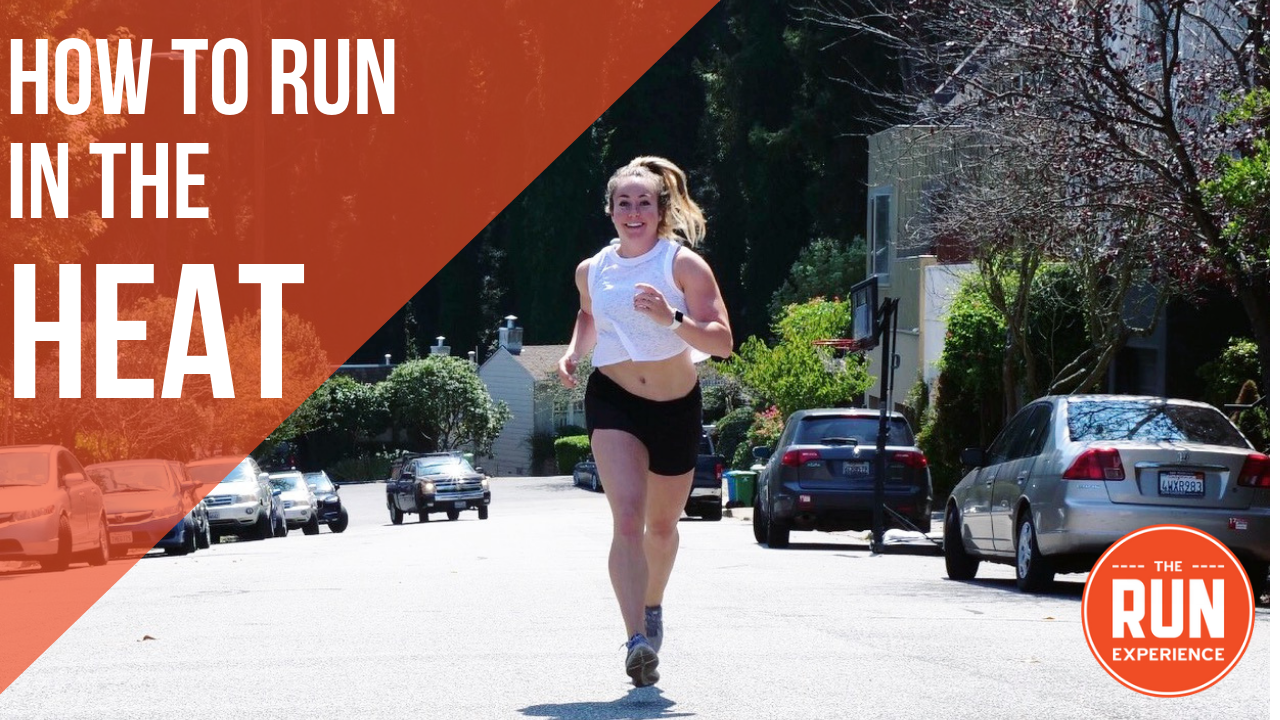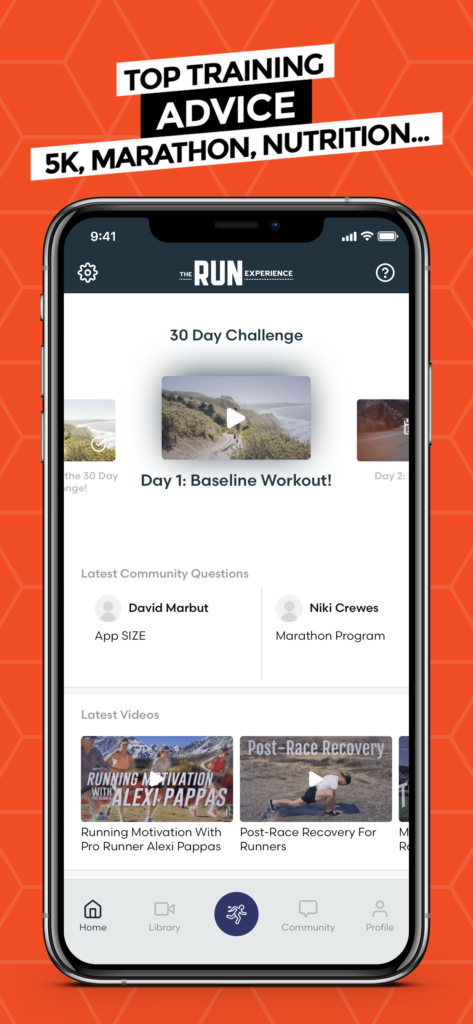How to Run in the Heat (Without Hating Every Second)
Learn how to run in the heat of summer hot weather without hating every second of it by using these tips for running in hot weather.

Learning how to run in the heat isn't rocket science, but it's certainly not straightforward.
The scorching sun and soaring temperatures can transform a typically invigorating run into a grueling endeavor. If you're someone who finds treadmill runs less appealing than hitting the open road or trails, don't fret. Navigating the summer heat while running doesn't have to be a dreaded experience.
In this guide, we're not just going to tell you to 'stay hydrated' and 'avoid the midday sun'—although those tips are valuable. Instead, we dive deeper, offering practical, proven strategies to help you run your best in hot weather without despising every minute of it. From understanding your body's adaptation to heat to tailoring your workout intensity and hydration strategy, we've got you covered.
Our top eight tips will equip you with the knowledge to safely and enjoyably tackle your runs, even when the temperature spikes. So, lace up your shoes, grab your sunscreen, and prepare to hit the pavement with a new perspective on summer running. Let's turn up the heat on your training while keeping your cool, both physically and mentally.
Benefits of Running in the Hot Heat of Summer
Running in hot weather isn't just a challenge—it comes with its own set of benefits. Here are some key advantages:
- Enhanced Endurance and Performance: Regularly running in the heat can improve your endurance. As your body adapts to the stress of running in hot conditions, it becomes more efficient at cooling itself and managing its energy resources, leading to improved overall performance, even in cooler conditions.
- Increased Sweat Efficiency: Running in the heat accelerates your body's ability to sweat, which is its natural way of cooling down. Over time, this can lead to more efficient sweat mechanisms, meaning your body becomes better at regulating temperature.
- Boosts Cardiovascular Fitness: The additional stress of heat forces your heart to work harder to pump blood to the skin for cooling while also supplying muscles with oxygen. This can strengthen your cardiovascular system.
- Mental Toughness: Running in the heat builds mental resilience. Overcoming the discomfort and challenges of hot weather running can increase your mental strength, benefiting you in other areas of training and life.
- Better Hydration Habits: The need for adequate hydration becomes more apparent in hot weather. This can help you develop better hydration habits, which are beneficial for overall health and fitness.
- Vitamin D Exposure: Running outside in the sun is an excellent way to boost your Vitamin D levels, which is essential for bone health and immune system function.
- Acclimatization to Heat: If you're training for a race that will take place in hot conditions, regular training in the heat can help your body acclimatize, giving you a competitive advantage.
How to Run in the Heat
Running in the heat can be a formidable challenge, even for the most seasoned runners. The sweltering summer days bring with them a unique set of obstacles – increased heart rate, excessive sweating, and the ever-present risk of heat exhaustion. But fear not, because with the right approach, you can turn these scorching days into an opportunity to enhance your endurance, adaptability, and overall running performance.
As the temperature climbs, so does the need for a strategic approach to your running routine. Whether you're training for a marathon or simply maintaining your fitness, understanding how to effectively manage heat and humidity is crucial. It's not just about enduring the heat—it's about adapting your body and technique to thrive in it.
1. Let Your Body Adapt
If you can cruise along at an eight-minute clip when it’s cool out, that’s great. But, it’s not going to feel the same in hot weather–especially not at first. The heat affects your heart rate, and you don’t want to push it too hard, too fast. When the weather starts to heat up, reduce the intensity of your runs by about 30 percent and work your way back up to a harder effort.
2. Run at the Best Time of the Day
If your schedule allows for it, run during a part of the day when it’s not scorching hot, especially with the heat index. If you can, run early in the morning before the heat sets in, or go for a night run once the sun is down. Just be careful not to run too close to your bedtime–it can interfere with your sleep. Give yourself two hours before you hit the sack if you’re going to run at night.
3. Find Some Shade
Don’t pick a running route that showcases the clear summer skies. Your body will get heated very quickly. This time of year, find a course with trees that are throwing the good kind of shade. You’ll stay cooler, and be able to run longer and faster because of it.
4. Run With a Friend

When you’re running in extreme heat, it’s easy for things to go downhill quickly–especially if you’re alone. Run with a friend to establish a buddy system for staying hydrated and keep tabs on one another. If one of you starts to have heat-related symptoms, you’ll notice and likely be able to help one another out before things get out of hand.
5. Incorporate Some Cross-Training
Running outside in the heat for several days can be tiresome in the thick of summer. Some weeks, there just isn’t a good break in the hot, humid weather where you can enjoy a cooler run. Don’t be afraid to weave in some cross-training instead of bearing the heat once or twice a week.
Try the treadmill, elliptical machine, swimming (what feels better than a pool when it’s so hot out?), or a stair-stepper. Many gyms even have an air-conditioned indoor track if you want to run but prefer to avoid the treadmill.
Now, let’s follow along with Coach Elizabeth to learn some of her best advice for learning how to run and perform your best during the summer months.
At the end of the day, we can’t control the heat–and the impact it will have on our bodies. But, there are simple things we can do to protect ourselves, run strong, and prevent heat-related problems while still getting our run on. Let’s learn more from Coach Elizabeth.
6. Manage Your Pace
We are lying to ourselves if we think we can maintain the same pace on a humid 90°F than we can on a crisp 60°F fall day. On a super hot day, you’re just going to need to slow down a bit–every runner has to face this reality.
If you’re running a race on a blazing day, adjust your expectations. You can’t expect to hit your PR if it’s going to be much hotter than you expected. You’ll just end up going out too fast the first mile and hitting the wall early on.
7. Hydrate, Hydrate, Hydrate
It’s easy to forget that our bodies are made up of about 70 percent water. And, when it’s hot and humid, we lose water SO much faster. It seems to just pour out like a faucet out of our pores–so you have to replace it!

Remember, it’s not all about hydrating during your run. Drink about ten to twenty ounces of water or so before you run. Depending on how long you are running, stop and get some water every four miles or so.
If you aren’t running more than four miles or so and you’re properly hydrated before your run, you probably don’t need to carry a water bottle. If you’re going for a longer run, carry water or make sure to plan in stops where you know there’s a working water fountain.
Pro-tip: Don’t overdo it, especially if you have a sensitive stomach. Everyone has experienced that sloshing sensation in their stomach when they drink too much water too quickly. It’s better to sip moderate amounts of a few times water (water that’s not too cold) than load up and have a heavy stomach at the start or midway through your run.
If you get to a point where you notice you’ve stopped sweating or start feeling dizzy, DO NOT ignore it. This is a sign your body is in danger–you could even pass out. There are times to muscle through being uncomfortable, and this is not one of them.
Stop, grab some water, a Gatorade, or something similar. Rest for a couple of minutes and take it slow to see how your body is responding to the hydration. You might need to slow your pace down a bit or take a walking break here and there. Just learn from it and plan to hydrate better in the future.
8. Keep Your Body as Cool as Possible
It’s important to keep your body cool before you run and cool it down after you get back inside. Stay inside in a cool place before you run and make sure you’re properly hydrated.
On super hot days, you can use arm ice packs to keep your body temperature down a bit, and many racecourses offer ice and water you can drink or just dump right over your head. Go ahead–it will feel great, cool you down–and no one is looking at your hair anyway.
You can also wear a hat and light-colored, lightweight clothing. Hot summer days are not a day to wear heavy, dark-colored running clothes. Plus, a hat will limit your exposure to UV rays, which is always a good idea.
When you get back from a run in hot weather, cool off and hydrate right away. This is the time to sit down with a big glass of water and drink as much as you want. Keep drinking water and other hydration beverages throughout the day to fully rehydrate your body and replenish your electrolytes.
Finally, don’t forget your sunscreen. It won’t do much to keep you cool, but it protects your skin and helps keep you healthy for every run down the line!
Conquer the Heat with The Run Experience
Ready to conquer the summer with workouts that get you in the best shape ever? Download the new TRE mobile app today!

It’s full of workouts, coaching advice, videos, and more. Want the full details? Read this post dedicated to everything you need to know related to our new mobile app.
